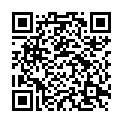|
|
|
| Module code: E2612 |
|
|
1V+4P (5 hours per week) |
|
6 |
| Semester: 6 |
| Mandatory course: yes |
Language of instruction:
German |
Assessment:
Practical exam with a short paper
[updated 08.01.2020]
|
E2612 (P211-0124) Electrical Engineering and Information Technology, Bachelor, ASPO 01.10.2018
, semester 6, mandatory course, technical
|
75 class hours (= 56.25 clock hours) over a 15-week period.
The total student study time is 180 hours (equivalent to 6 ECTS credits).
There are therefore 123.75 hours available for class preparation and follow-up work and exam preparation.
|
Recommended prerequisites (modules):
None.
|
Recommended as prerequisite for:
|
Module coordinator:
Prof. Dr. Martin Buchholz |
Lecturer: Prof. Dr. Martin Buchholz
[updated 10.09.2018]
|
Learning outcomes:
After successfully completing this combination lecture/lab course, students will - have in-depth knowledge about high-frequency engineering and high-frequency measurement technology. - be able to calculate complex analogue and digital transmission systems and to verify them metrologically. - be able to simulate antennas and characterize them metrologically. - be able to perform independent measurements with a spectrum analyzer and a network analyzer. - be able to perform measurements on optical communication systems. - be able to plan RFs. - be able to use modern development tools to implement digital algorithms in an FPGA.
[updated 08.01.2020]
|
Module content:
Lecture topics: 1. Noise figure and sensitivity of an HF receiver 2. Linear and non-linear signal distortion 3. Receiver architectures and high frequency components Lab experiments: 1. Interferometry: measuring a glass fiber using an optical interferometer 2. Eye diagram: evaluating an eye diagram on a 2.5 Gbit/s transmission 3. Spectrum analyzer: measuring the spectra of modulated signals 4. Network analyzer 1: measuring the S-parameters of passive components 5. Network analyzer 2: measuring the S-parameters of active HF components 6. Simulating HF components and systems with EDA software 7. Antenna test: measuring the 3-dimensional antenna pattern 8. Image processing: applying various filter operators 9. Wave propagation: using a planning tool for the optimization of digital radio systems 10. Implementing digital algorithms from receiver technology in hardware
[updated 08.01.2020]
|
Teaching methods/Media:
Lecture notes, projector, laboratory
[updated 08.01.2020]
|
Recommended or required reading:
Hiebel, Michael: Grundlagen der vektoriellen Netzwerkanalyse, Rohde & Schwarz, 2006 Pehl, Erich: Digitale und analoge Nachrichtenübertragung, Hüthig, 2001, 2. Aufl. Rauscher, Christoph; Janssen, Volker; Minihold, Roland: Grundlagen der Spektrumanalyse, Rohde & Schwarz, 2007 Razavi, Behzad: RF Microelectronics, Prentice Hall, (latest edition) Thumm, Manfred K.A.; Wiesbeck, Werner; Kern, Stefan:: Hochfrequenzmesstechnik - Verfahren und Messsysteme, Teubner, 1998, 2. Aufl.
[updated 08.01.2020]
|


